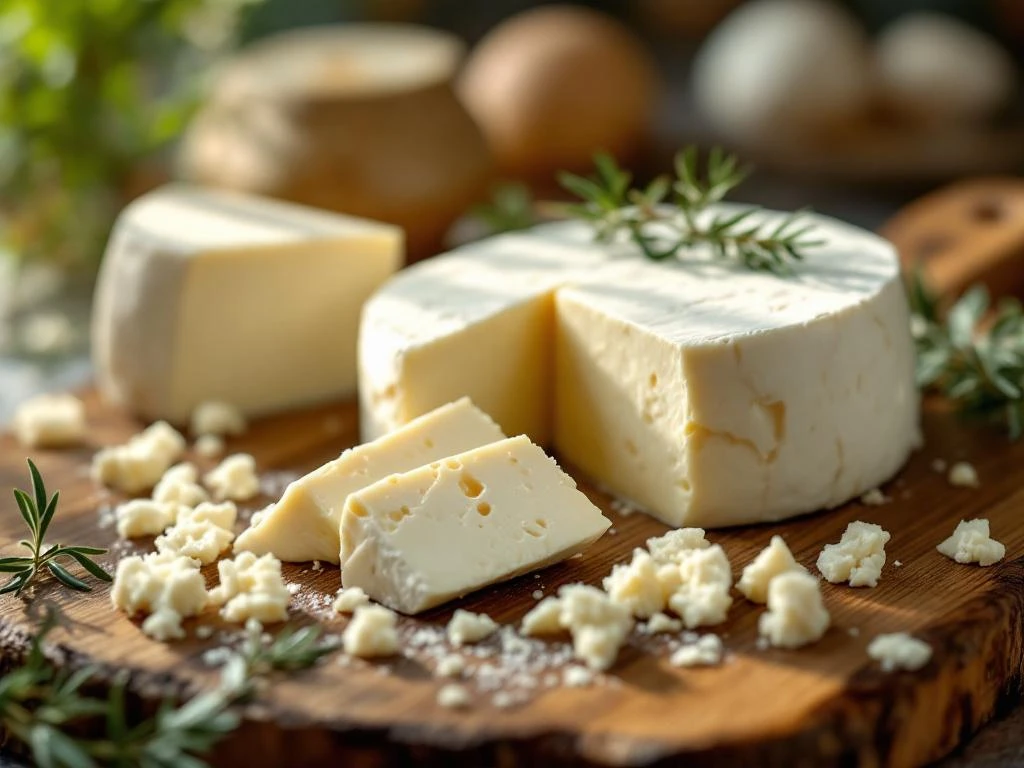Goat cheese is known by various names across the globe, with chèvre being the most internationally recognised term from French cuisine. In English-speaking markets, it’s commonly called goat cheese or goat’s cheese, whilst Dutch markets refer to it as geitenkaas, Italians call it caprino, and Germans know it as Ziegenkäse. Understanding these different terminologies is essential for B2B buyers in the cheese industry who source products internationally and need to communicate effectively with suppliers across different markets.
Understanding goat cheese terminology in the global market
For B2B buyers in retail, foodservice, and industrial sectors, knowing the various names for goat cheese is more than linguistic curiosity—it’s a business necessity. When sourcing goats cheese from international suppliers, terminology differences can impact everything from product specifications to customs documentation. A cheese specialist in Amsterdam might offer geitenkaas, whilst a supplier in Lyon lists the same product as chèvre, and an Italian producer markets it as caprino. These naming variations reflect not just language differences but also regional cheese-making traditions and quality standards. For instance, French chèvre often implies specific production methods and aging processes that differ from Dutch geitenkaas traditions. Understanding these nuances helps buyers select products that meet their exact requirements, whether they’re sourcing for specialty cheese shops, restaurants, or industrial processing facilities requiring specific cheese formats.What is the French name for goat cheese?
The French term for goat cheese is chèvre, pronounced “shev-ruh,” which literally translates to “goat” in French. This term has become the standard in many international culinary contexts, particularly in fine dining and gourmet retail settings. Professional chefs and cheese specialists often use “chèvre” regardless of the cheese’s origin, as French cheese terminology carries significant prestige in the global market. French terminology dominates international cheese markets due to France’s historical influence on cheese-making traditions and culinary arts. When you see “chèvre” on product labels, it often signals a certain quality expectation and production method. Many producers worldwide adopt French naming conventions for their premium goat cheese lines, recognising that terms like “fromage de chèvre” or “chèvre frais” communicate quality and authenticity to discerning buyers. This linguistic influence affects how products are marketed, labelled, and positioned in both retail and foodservice channels.How do different countries name goat cheese?
Goat cheese nomenclature varies significantly across major cheese-producing nations, each reflecting local language and cheese-making traditions. In the Netherlands, it’s called geitenkaas, a straightforward compound of “geiten” (goats) and “kaas” (cheese). Italian producers market their goat cheese as caprino, derived from “capra” (goat), whilst Spanish-speaking markets use “queso de cabra” or simply “cabra.” German-speaking regions refer to it as Ziegenkäse, combining “Ziege” (goat) with “Käse” (cheese). These regional naming conventions carry important implications for B2B buyers sourcing internationally. Each term often implies specific production methods, aging processes, and flavour profiles typical to that region. Dutch geitenkaas might suggest fresh, mild varieties perfect for slicing, whilst Italian caprino often indicates aged, harder varieties suitable for grating. Understanding these associations helps buyers communicate precise product requirements to suppliers and ensures they receive products that match their quality expectations and intended applications.What’s the difference between fresh and aged goat cheese names?
Fresh goat cheese varieties carry distinct terminology that indicates their young, unaged status. In French, fromage de chèvre frais specifically denotes fresh goat cheese, whilst aged varieties are called chèvre affiné or chèvre vieilli. These naming distinctions are crucial for professional buyers as they directly correlate with texture, flavour intensity, and suitable applications in culinary preparations. The aging process fundamentally changes how goat cheese is categorised and named in professional settings. Fresh varieties, typically consumed within days or weeks of production, maintain creamy textures ideal for spreading or crumbling. Aged varieties develop firmer textures and complex flavours over weeks or months of maturation. Some speciality terms include “buchette” for log-shaped fresh cheese, “crottin” for small round aged varieties, and “tomme de chèvre” for larger wheel formats. These specific terms help foodservice professionals and retailers accurately specify products for their intended uses, whether for cheese boards, cooking applications, or retail display.Why do goat cheese names matter for B2B buyers?
Understanding goat cheese terminology directly impacts B2B communication efficiency and order accuracy. When retail buyers, foodservice professionals, and industry clients use precise terminology, they eliminate ambiguity in product specifications. A buyer requesting “fresh chèvre” versus “geitenkaas spread” communicates specific texture, packaging, and application requirements that help suppliers provide exactly what’s needed. Proper terminology usage also ensures quality expectations align between buyers and suppliers. Terms like “artisanal chèvre” or “traditional geitenkaas” carry implicit quality standards and production method expectations. For industrial buyers seeking specific formats for processing, understanding terms like “goat cheese crumbles” versus “chèvre émietté” helps specify the exact product format required. This linguistic precision reduces ordering errors, minimises product returns, and streamlines the procurement process, ultimately saving time and resources whilst ensuring customer satisfaction.Key takeaways for goat cheese terminology
Professional cheese buyers should master both local and international goat cheese terminology to navigate the global market effectively. Essential terms include chèvre (French), geitenkaas (Dutch), caprino (Italian), and Ziegenkäse (German), along with age-specific designations like “frais” for fresh and “affiné” for aged varieties. Understanding these terms enables clearer supplier communication and more precise product sourcing. Success in the international goats cheese market requires fluency in multiple naming conventions. Whether sourcing for retail cheese counters, restaurant kitchens, or industrial applications, buyers who understand global cheese terminology can access wider supplier networks, specify products more accurately, and meet diverse customer demands. As the specialty cheese market continues to grow globally, this linguistic knowledge becomes an increasingly valuable business asset, enabling buyers to source authentic, high-quality products that meet specific market requirements whilst building stronger relationships with international suppliers.Just finished reading about goat cheese terminology? You're not alone - most of our international clients tell us that navigating different names and standards was one of their biggest sourcing headaches before working with us.
